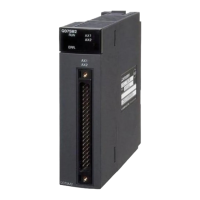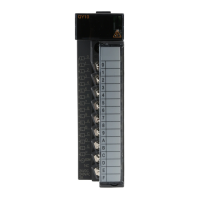9 - 13
MELSEC-Q
9 MAJOR POSITIONING CONTROL
(4) Speed switching
(Refer to "
Pr.19
Speed switching mode".)
The two modes for changing the speed are shown below.
•
Standard switching………Switch the speed when executing the next
positioning data.
•
Front-loading switching.....The speed switches at the end of the
positioning data currently being executed.
(a) Standard speed switching mode
1) If the respective command speeds differ in the "positioning data
currently being executed" and the "positioning data to carry out
the next operation", the machine will accelerate or decelerate
after reaching the positioning point set in the "positioning data
currently being executed" and the speed will change over to the
speed set in the "positioning data to carry out the next operation".
2) The parameters used in acceleration/deceleration to the
command speed set in the "positioning data to carry out the next
operation" are those of the positioning data to carry out
acceleration/deceleration.
Speed switching will not be carried out if the command speeds
are the same.
OFF
ON
OFF
ON
OFF
ON
OFF
ON
11 11 11 01
00
V
Dwell time
t
Speed
switching
Da. 1 O
peration pattern
Positioning
Start complete signal
BUSY signal
Positioning complete signal
Positioning start signal
[XC, XD, XE, XF]
[X10, X11, X12, X13]
[Y10, Y11, Y12, Y13]
Dwell time
[X14, X15, X16, X17]
Fig. 9.4 Operation for the standard speed switching mode
3) Speed switching condition
If the movement amount is small in regard to the target speed, the
current speed may not reach the target speed even if
acceleration/deceleration is carried out. In this case, the machine
is accelerated/decelerated so that it nears the target speed.
If the movement amount will be exceeded when automatic
deceleration is required (Ex. Operation patterns "00", "01"), the
machine will immediately stop at the designated positioning
address, and a warning "Insufficient movement distance"
(warning code: 513) will occur.

